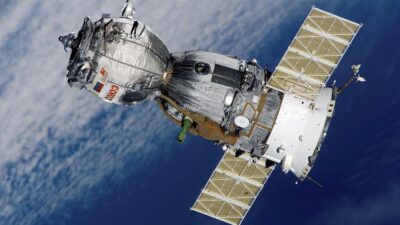Beyond AI: The Next Frontier of Human-Machine Collaboration
As we stand on the precipice of a technological revolution, the discourse surrounding artificial intelligence (AI) has shifted from mere automation to a nuanced exploration of human-machine collaboration. AI has made significant strides in mimicking human cognitive functions—learning, reasoning, and decision-making—but the burgeoning frontier now lies in enhancing synergy between humans and machines. This evolution presents exciting opportunities for various sectors, transforming how we work, interact, and innovate.
Understanding the Current Landscape of AI
AI has rapidly evolved from simple algorithms to complex neural networks capable of autonomous learning. Industries have harnessed AI for data analysis, customer service, predictive maintenance, and more. However, as AI becomes an integral part of our daily lives, it has also revealed limitations—especially in nuanced understanding, emotional intelligence, and creative problem-solving.
The Challenge: The challenge of isolating human intelligence and emotion from machine capabilities creates a dual narrative: while AI can handle vast amounts of data and automate routine tasks, it often lacks the subtlety that makes human interaction rich and meaningful.
The Shift Towards Human-Machine Collaboration
Rather than viewing AI as a replacement for human workforce, a transformative perspective is emerging—seeing AI as a collaborator. This new paradigm can improve efficiency, creativity, and problem-solving capabilities.
1. Augmented Intelligence:
Augmented Intelligence emphasizes the idea that AI is best utilized as an enhancement tool to human cognition. This shift can be observed in professions like healthcare, where AI assists doctors by providing diagnosis support or identifying patterns in patient data. Here, AI is not just a tool but a partner that enhances human capabilities.
2. Creativity and Innovation:
From art to music and writing, AI tools are increasingly serving as co-creators. Programs that generate visual art or assist in composing music are pushing the boundaries of creativity. This collaboration sparks inspiration, providing artists and creators with fresh perspectives that may not have occurred within a purely human framework.
3. Education and Training:
In the realm of education, AI-powered systems can create personalized learning experiences, attending to the unique needs of each student. Intelligent tutors can analyze a student’s progress and offer tailored support. This not only makes learning more effective but empowers educators to focus on fostering critical thinking and emotional growth.
Envisioning the Future of Collaboration
As we look to the future, several key trends may define human-machine collaboration:
1. Ethical AI Development:
Integrating ethical considerations into AI is crucial. As machines become more embedded in decision-making processes, ensuring fairness, accountability, and transparency in AI systems will be essential. This can only be achieved through collaboration between technologists, ethicists, and policymakers.
2. Interdisciplinary Team Dynamics:
The workplace is increasingly becoming an amalgamation of skills from diverse fields. Teams that blend data scientists with creative thinkers, behavioral scientists, and domain experts are likely to generate innovative solutions. This interdisciplinary approach leverages the strengths of both machines and humans.
3. Continuous Learning:
The rapid pace of technological change necessitates continuous learning. Organizations must foster a culture of adaptability, encouraging employees to embrace lifelong learning. Technologies such as AI can facilitate this by providing resources and learning pathways tailored to individual needs.
Conclusion: Embracing a Collaborative Future
As we journey beyond AI into this new frontier, it is imperative to embrace the concept of collaboration. This involves recognizing the unique strengths of both humans and machines and leveraging them to solve complex challenges and achieve greater innovations. While AI has transformed industries, the potential for human-machine collaboration remains largely untapped.
The future will not be defined solely by autonomous machines, but by a harmonious coalescence of human creativity, empathy, and intuition with the computational prowess and efficiency of AI. Embracing this vision will empower us to tackle profound global challenges, drive economic growth, and enhance the quality of our lives.
In conclusion, the next frontier of human-machine collaboration promises to redefine our interactions, reshape industries, and unlock unprecedented levels of creativity and innovation—ultimately leading us to a future that is not solely about machines, but about human potential amplified through technology.



